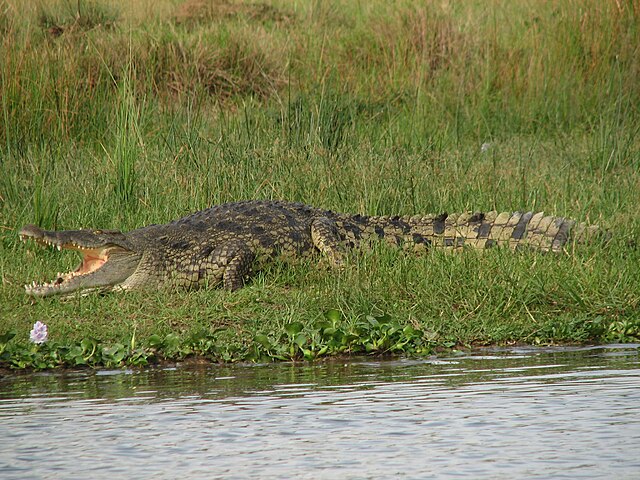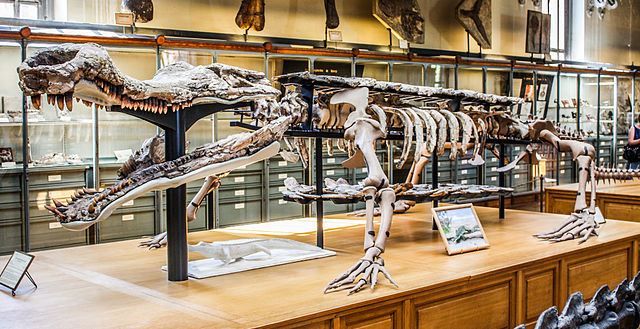Stomatosuchidae is an extinct family of neosuchian crocodylomorphs. It is defined as the most inclusive clade containing Stomatosuchus inermis but not Notosuchus terrestris, Simosuchus clarki, Araripesuchus gomesii, Baurusuchus pachecoi, Peirosaurus torminni, or Crocodylus niloticus. Two genera are known to belong to Stomatosuchidae: Stomatosuchus, the type genus, and Laganosuchus. Fossils have been found from Egypt, Morocco, and Niger. Both lived during the Cenomanian stage of the Late Cretaceous. The skulls of stomatosuchids are said to be platyrostral because they have unusually flattened, elongate, duck-shaped craniums with U-shaped jaws. This platyrostral condition is similar to what is seen in the "nettosuchid" Mourasuchus, which is not closely related to stomatosuchids as it is a more derived alligatoroid that existed during the Miocene.
Stomatosuchidae
Lower jaws of Laganosuchus thaumastos
Neosuchia is a clade within Mesoeucrocodylia that includes all modern extant crocodilians and their closest fossil relatives. It is defined as the most inclusive clade containing all crocodylomorphs more closely related to Crocodylus niloticus than to Notosuchus terrestris. Members of Neosuchia generally share a crocodilian-like bodyform adapted to freshwater aquatic life, as opposed to the terrestrial habits of more basal crocodylomorph groups. The earliest neosuchian is suggested to be the Early Jurassic Calsoyasuchus, which lived during the Sinemurian and Pliensbachian stages in North America. It is often identified as a member of Goniopholididae, though this is disputed, and the taxon may lie outside Neosuchia, which places the earliest records of the group in the Middle Jurassic.
Image: Nilecroc 100
Image: Museum of Natural History Sarcosuchus




